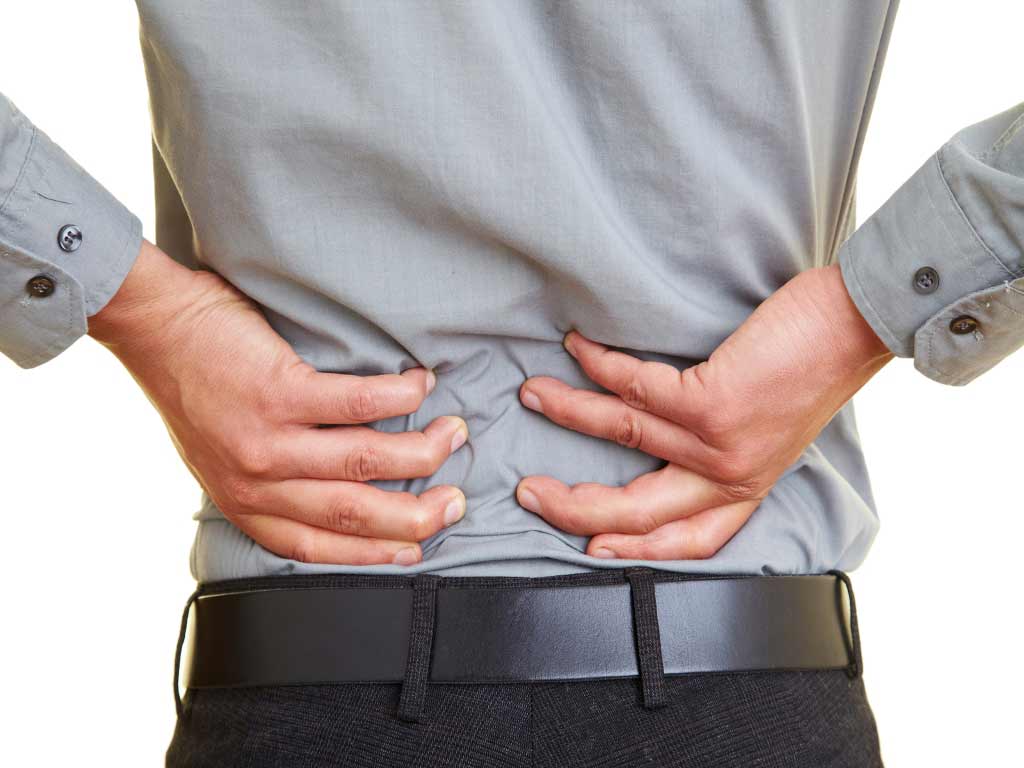
Chronic back pain is caused by a variety of factors such as poor posture, muscle strain, and injuries. In some cases, certain medical conditions can also contribute to the development of chronic pain. Fortunately, there are various treatments available for this condition. These options may include over-the-counter medications, physical therapy, TENS therapy, or surgery for severe cases. However, people should consult with a healthcare professional to determine the most effective treatment plan for each individual’s unique needs.
Living with a chronic back condition can be debilitating. Simple tasks like sitting, standing, or even lying down can become painful and challenging. Additionally, chronic conditions may lead to sleep disturbances, decreased energy levels, and a decline in overall quality of life. Moreover, it limits mobility, affects productivity, and causes constant discomfort for the individual experiencing it. This article will present the causes and treatments for chronic conditions in the back.
Definition and Causes of Chronic Back Pain
Chronic back pain refers to a persistent and long-lasting discomfort or ache in the area of the back. Unlike acute pain, which lasts for a short period, chronic pain persists for months or even years. This type of pain can greatly impact a person’s daily life, making it difficult to perform simple tasks.
Individuals suffering from chronic conditions often experience a constant dull ache or sharp pain in their back. This pain can spread to other parts of the body, such as the hips, legs, or shoulders. Additionally, managing chronic pain can be challenging, as it requires a comprehensive approach. This approach may involve medical treatments, physical therapy, lifestyle changes, and other pain management techniques.
The causes of chronic pain in the back can vary, but they often include several factors. These include muscle strain, poor posture, herniated discs, spinal stenosis, sciatica or arthritis. These conditions can lead to inflammation, nerve compression, or structural abnormalities in the spine. Therefore, proper diagnosis and treatment are essential to manage and alleviate chronic pain effectively.
Risk Factors
- Poor posture: frequent slouching or hunching over for extended periods can strain the muscles and ligaments in the back.
- Obesity: carrying excess weight puts additional stress on the spine and can contribute to the development of chronic pain.
- Smoking: impairs blood flow, which can hinder the healing process and increase the likelihood of chronic condition.
- Ageing: as individuals age, the spinal discs gradually lose their cushioning ability and become more susceptible to wear and tear.
- Poor lifting techniques: lifting heavy objects using improper techniques, such as bending at the waist instead of using the legs.

Treatment Options for Chronic Back Pain
There are several treatment options available for individuals suffering from chronic back pain. One common option is the use of over-the-counter medications. These medications, which can be purchased without a prescription, provide relief from pain and inflammation. Examples include nonsteroidal anti-inflammatory drugs (NSAIDs) like ibuprofen or naproxen. These medications work by reducing swelling and relieving pain in the affected area.
Physical therapy is another common treatment option. It involves the use of various exercises and techniques to improve strength, flexibility, and overall function of the back muscles. A physical therapist will work closely with the patient to develop a personalised treatment plan. These may include stretching exercises, strengthening exercises, manual therapy, and other modalities such as heat or cold therapy.
Furthermore, Transcutaneous Electrical Nerve Stimulation (TENS) therapy, such as iTENS wireless device, offers a non-invasive treatment option for chronic pain. This therapy involves the use of a small device that delivers low-voltage electrical currents to the back area. It helps to disrupt the pain signals sent to the brain and provides temporary pain relief.
When To See A Doctor
When experiencing severe pain in the back, various indicators suggest the need to consult a doctor. These signs include persistent pain, numbness or weakness in the legs and difficulty standing or walking. Neglecting to see a doctor can lead to further complications. Without proper medical intervention, the underlying cause of the pain may worsen.
It is important to see a doctor for chronic pain to ensure proper diagnosis and treatment. A doctor can conduct a thorough evaluation to determine the underlying cause of the pain. They can then develop a tailored treatment plan, which may include medication, physical therapy, or other interventions.

Preventive Measures for Chronic Back Pain
Chronic back pain can greatly affect a person’s quality of life and daily activities. It is important to take preventive measures to manage and alleviate this condition. One of the key preventative measures is maintaining a good posture. This involves sitting and standing up straight, avoiding slouching or hunching over.
Regular exercise is also crucial in preventing chronic pain. Engaging in physical activity helps to strengthen the muscles that support the spine, improve flexibility, and promote proper alignment. Additionally, regular exercise helps in maintaining a healthy weight, which reduces the strain on the back. Moreover, exercise releases endorphins, which are natural painkillers that can alleviate discomfort associated with chronic pain.
Furthermore, practising proper lifting techniques is one of the key preventive measures for chronic pain. It involves using the legs to lift instead of the back and avoiding twisting or jerking motions while lifting. By incorporating these preventive measures into daily activities, individuals can significantly reduce their risk of developing chronic conditions.
Pain Management Support
Managing chronic conditions in the back requires a comprehensive approach to address the underlying causes and provide relief. This often involves a combination of medical treatments, physical therapy, and lifestyle changes. Pain management support aims to reduce pain symptoms, improve mobility, and increase overall function for individuals with chronic conditions.
Pain management support includes various interventions such as medication, exercise, heat or cold therapy, acupuncture, or chiropractic care. Additionally, it focuses on addressing psychological factors like stress and anxiety, as these can contribute to the perception of pain. Overall, chronic pain requires proper pain management support to enhance daily functioning and overall well-being.







